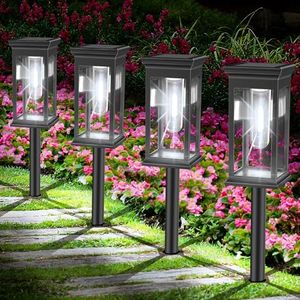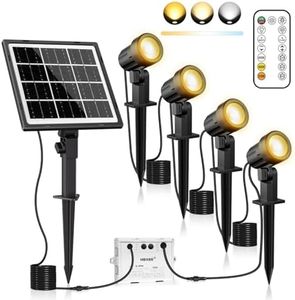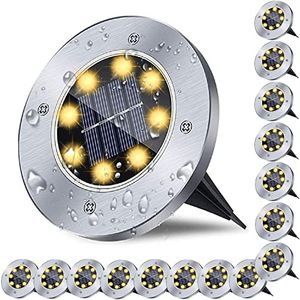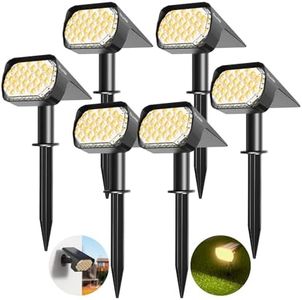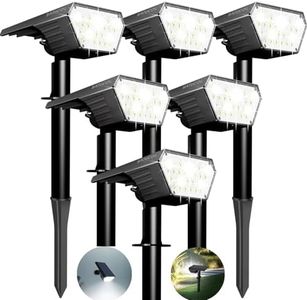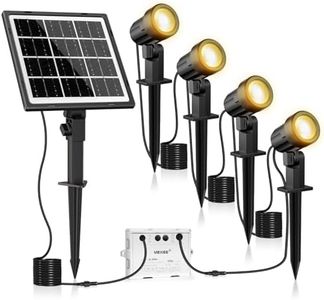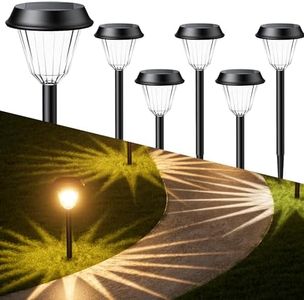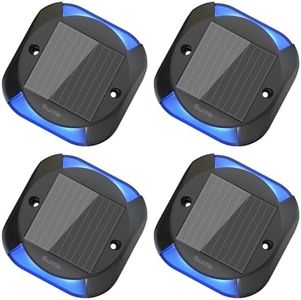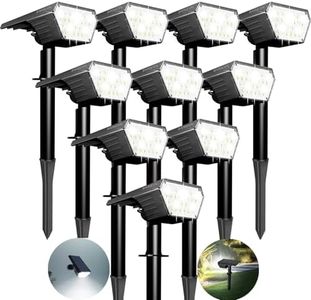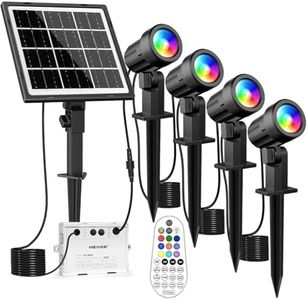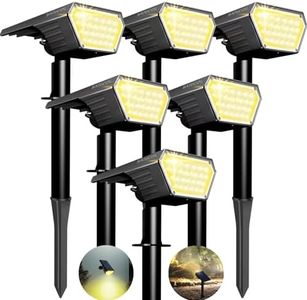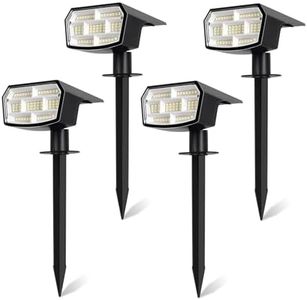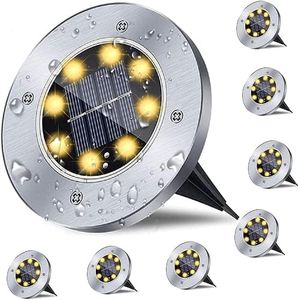We Use CookiesWe use cookies to enhance the security, performance,
functionality and for analytical and promotional activities. By continuing to browse this site you
are agreeing to our privacy policy
10 Best Solar Landscape Lights
From leading brands and best sellers available on the web.By clicking on a link to a third party's website, log data is shared with that third party.
Buying Guide for the Best Solar Landscape Lights
When choosing solar landscape lights, it’s important to focus on how you plan to use the lights and the environment where they will be installed. Solar lights are great for pathways, gardens, or highlighting specific features, but their effectiveness depends on where you place them and how sunny your space is. Start by thinking about the areas you want to light up and the mood you wish to create—whether it’s safety lighting for walking paths, accent lighting for plants, or decorative lights for ambiance. With this in mind, learning about key specifications will help you make the best choice for your needs.Brightness (Lumens)Brightness, measured in lumens, tells you how much light a fixture produces. It’s important because it affects how well your paths or garden features are illuminated. Lower-lumen lights (less than 50 lumens) offer a soft glow, great for decorative effects or marking edges, while medium brightness (50-150 lumens) is good for lighting walkways and flower beds without being overpowering. Higher-brightness lights (above 150 lumens) are better for tasks or security lighting, helping you see clearly at night. Choose the brightness level based on whether you need subtle highlights, general garden/pathway guidance, or strong visibility.
Battery Life/Run TimeBattery life, also called run time, indicates how long the light will stay on after a full charge. This is important because it determines whether the light will last through the night. Short run times (4-6 hours) might be enough for evening gatherings, while medium (6-8 hours) covers most of the night. Long run times (8-12 hours or more) are best if you want lighting from dusk till dawn, especially in areas with less sunlight. Consider how long you want your lights to stay on and the amount of sunlight the installation area gets.
Charging TimeCharging time is how long the solar panel needs to fully charge the battery during daylight. Faster charging (4-6 hours of sunlight) is handy if your area sometimes gets shade or cloudy weather, while slower charging lights (8 hours or more) require consistent, strong sunlight. If your location doesn’t get much direct sun, look for lights with better solar efficiency and shorter required charging time.
Weather Resistance (IP Rating)The IP rating tells you how well the light handles rain, dust, and outdoor conditions. It’s important to know this because solar lights live outside year-round. A basic IP44 rating handles most rain but might not stand up to heavy storms, while higher ratings like IP65 give better protection from water jets and dust. Pick a higher IP rating if your climate has frequent rain, dust, or snow, or if the light will be in a vulnerable spot.
Material and Build QualityMaterial and build quality affect how long the lights last and whether they keep looking good. Cheaper lights might use flimsy plastic, which can crack or fade under sun and weather, while strong plastics and metals like stainless steel are more durable and better for tough environments. If your lights will be exposed to extreme temperatures or heavy use, investing in better materials will keep them operating longer and looking nicer.
Installation TypeInstallation type refers to how the lights are set up—staked into the ground, wall-mounted, or hung. This matters because different installation types serve different purposes and fit different spaces. Ground-stake lights are easy for pathways, wall-mounts are suited for accenting or security lighting, and hanging lights can decorate trees or patios. Choose the type that matches the layout and usage you need.
Light Color and TemperatureLight color (measured in Kelvins) sets the mood in your garden. Warm white lights (2700-3500K) give a cozy, inviting feel, which is ideal for lounging or enhancing plants. Cool white lights (4000-6000K) are brighter and sharper, making them great for security or visibility. Colored lights are also available for decoration or special occasions. Pick the color temperature that fits the atmosphere you want to create.
